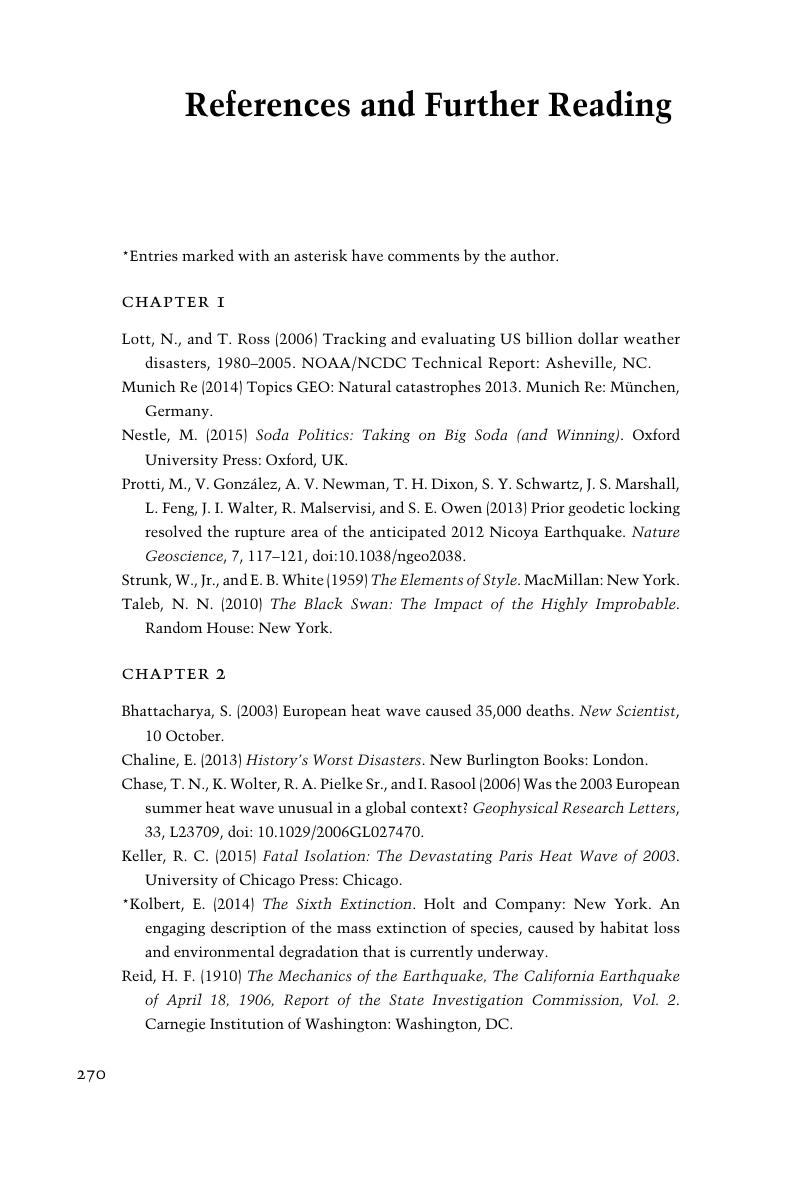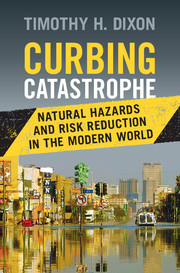Book contents
- Curbing Catastrophe
- Curbing Catastrophe
- Copyright page
- Dedication
- Contents
- Online Appendix
- Preface
- Acknowledgments
- 1 Black and White Swans, Communication, Evolution, and Markets
- 2 What Is a Natural Disaster? Where Do They Occur and Why? Are They Different from Human-Made Disasters?
- 3 If We Know So Much about Natural Disasters, Why Do We Remain Vulnerable?
- 4 Japanese Earthquakes and Nuclear Power Plant Failures
- 5 Future Earthquake and Tsunami Disasters
- 6 Nuclear Power, Coal, and Tuna: The Concept of Relative Risk
- 7 Past and Future Coastal Flooding: Galveston, New Orleans, Bangladesh, and the Specter of Sea-Level Rise
- 8 What’s All the Fuss about Global Warming?
- 9 Solutions
- Summary of Recommendations by Chapter
- References and Further Reading
- Index
- References
References and Further Reading
Published online by Cambridge University Press: 26 January 2017
- Curbing Catastrophe
- Curbing Catastrophe
- Copyright page
- Dedication
- Contents
- Online Appendix
- Preface
- Acknowledgments
- 1 Black and White Swans, Communication, Evolution, and Markets
- 2 What Is a Natural Disaster? Where Do They Occur and Why? Are They Different from Human-Made Disasters?
- 3 If We Know So Much about Natural Disasters, Why Do We Remain Vulnerable?
- 4 Japanese Earthquakes and Nuclear Power Plant Failures
- 5 Future Earthquake and Tsunami Disasters
- 6 Nuclear Power, Coal, and Tuna: The Concept of Relative Risk
- 7 Past and Future Coastal Flooding: Galveston, New Orleans, Bangladesh, and the Specter of Sea-Level Rise
- 8 What’s All the Fuss about Global Warming?
- 9 Solutions
- Summary of Recommendations by Chapter
- References and Further Reading
- Index
- References
Summary

- Type
- Chapter
- Information
- Curbing CatastropheNatural Hazards and Risk Reduction in the Modern World, pp. 270 - 286Publisher: Cambridge University PressPrint publication year: 2017



